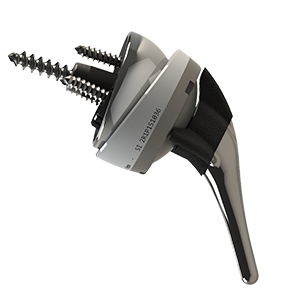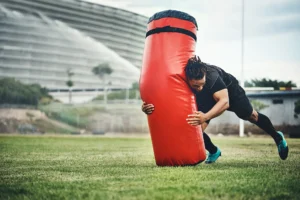Reverse shoulder replacement surgery is an option for people who are experiencing shoulder pain and loss of function due to rotator cuff tear arthropathy (a type of arthritis) or a previous failed shoulder replacement surgery. Unlike a conventional shoulder replacement, in this type of surgery, the normal anatomy of the shoulder joint is reversed. This can help to improve overall shoulder function.
In this blog post, I will discuss information you may find helpful to know about reverse shoulder replacement surgery. I will also share some of the benefits and what to expect after surgery.
What is a reverse shoulder replacement surgery?
Reverse shoulder surgery is becoming more popular as an option for treating shoulder pain, especially for people with a cuff tear arthropathy as mentioned above. A healthy shoulder uses the rotator cuff muscles to help power the arms range of motion. Tendons can often be repaired if the damage isn’t severe, however, if the tendons have enough damage, then you might be a candidate for a reverse shoulder replacement operation. This can help improve the joint’s function and reduce pain, especially if there are signs of arthritis from the tear.
The traditional approach to shoulder replacement surgery is to replace the damaged joint with that of an artificial joint, requiring the use of the rotator cuff muscle to function properly. In reverse shoulder replacement surgery, the process is literally reversed because the rotator cuff muscle no longer functions as it should. The artificial joint is attached to the healthy part of the shoulder and the damaged part of the shoulder is removed, relying on the deltoid muscle, instead of the rotator cuff to help the arm move.
Who is a candidate for this procedure?
If you are experiencing pain and limited mobility in your shoulder, you may be a candidate for reverse shoulder replacement surgery. This type of surgery is commonly recommended for patients who have suffered a rotator cuff tear that cannot be repaired surgically. It is also sometimes recommended for patients who have arthritis or other degenerative conditions that cause pain and limited mobility in the shoulder.
What does the shoulder implant look like?
In a reverse total shoulder replacement, the socket and metal ball are switched from that of a traditional total shoulder replacement. The metal ball is fixed to the socket (glenoid) and the plastic cup is fixed to the upper end of the humerus (the upper arm bone).

What can I expect after surgery?
After reverse shoulder replacement surgery, you will likely experience some pain and discomfort. This is normal and to be expected. I will help you manage your pain with the necessary medication, and you will also need to rest to allow your shoulder to heal. You will likely need to wear a sling for four to six weeks after surgery. Physical therapy is often recommended, as it can help improve range of motion and function.
What are the benefits of reverse shoulder replacement surgery?
There are many benefits to reverse shoulder replacement surgery. Some of the most common benefits include:
- Relief from pain
- Improved range of motion
- Improved function
These are just some of the potential benefits that you may experience after reverse shoulder replacement surgery. Of course, every patient is different, so I believe it’s important to discuss all the treatment options to find what is best for the individual and to answer any question or concern you may have regarding surgery.
If you are considering reverse shoulder replacement surgery or have any questions, please call me to schedule a consultation. You may also complete the form below.





